Larry Monczka, our special guest writer, offers some creative ideas to bring some personal vision to your nature photography. He provides some specific techniques to help you take abstract photos of nature that go beyond the straightforward record shot.
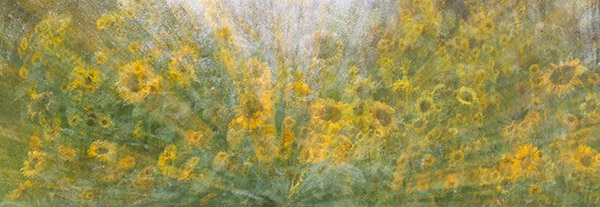
© Larry Monczka
Abstract Expressions in Nature
by Larry Monczka
By and large, nature photographers are a fairly conservative bunch. They know what they like and they like to know exactly what they’re seeing in a nature picture. Anyone who has regularly entered local camera club competitions knows what I’m talking about.
This time-honoured approach to nature photography has invariably leaned towards the documentary. Traditionally, this straightforward treatment deals with "the truth, the whole truth and nothing but the truth." The emphasis has always been on communicating the maximum amount of information about the flower, bird or landscape as clearly as possible. Technically, this approach has pretty much adhered to naturalistic camera angles, extensive depth of field, maximum sharpness and perfect exposure.
In an age of image saturation, I’ve become less interested in what things look like than in what they feel like.
Let me suggest an alternative vision. In an age of image saturation, I’ve become less interested in what things look like than in what they feel like. What’s up front doesn’t count as much any more. Give me subtext. Since the whole point here is to break away from definitions and the burden of identity, my concept of abstraction is simple. I see it as a freer, more personal approach to nature photography. The creative purpose of the photographer, as artist, should take precedence over a mere description of the subject. Let the field of poppies, ice covered pond or mountain range become the starting point of a visual exploration, rather than an end in themselves. Start by repeating after me: "This is not a record shot." This mantra will lead us down some interesting rabbit holes.
The Abstract Landscape
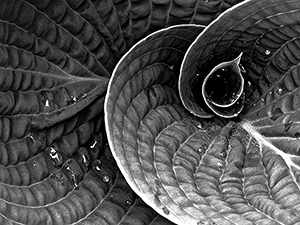
© Larry Monczka
Sure, you’ll want to capture the big picture when confronted with a grand vista. I did, and still do. But consider the power of a telephoto lens to isolate selected parts of the overall scene and create abstract photos. The narrow angle of view, combined with a tendency to compress or flatten perspective, emphasizes repeating shapes, patterns and rhythms. Allow your eye to nibble and slowly digest bits and bites of the visual feast before you. Zoom lenses are particularly useful, since they allow you to work a situation. You can try out numerous compositions from one vantage point.
The Intimate Landscape
Eliot Porter is considered the master of the intimate landscape. Subjects such as mosses, rocks and the mosaic of the forest floor were ordered, under his probing eye, into what he called "centrifugal" abstract compositions. He believed that the eye should be led outward towards the corners and edges of the picture, rather than inwards, towards some imposed central point of interest. He considered a loosely arranged nature image to be more true to nature. The eye freely wanders throughout the abstract picture space, guided by general principles of visual design, but not dictated to by ironclad rules.
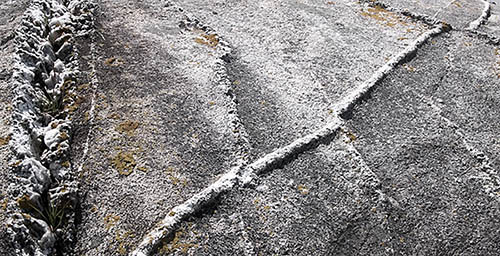
© Larry Monczka
It’s important to remember that graphic abstract photos, such as the patterns and textures of rock faces or the warp and weave of a wet meadow, need to be in sharp focus from front to back. Softness in any part of the picture draws immediate attention to itself. This becomes an eyesore and distracts from the integrity of the whole that this treatment demands.
Fuzzy Flowers
Abstract photos of flowers have a fine advocate in the photographic artistry of Maria Zorn. In her pictures, soft, delicate colours shift and sway, engaged in a romantic and intimate waltz. Whether lying prone in a field of wildflowers or working a tabletop bouquet, the idea is to shoot wide open with, say a 50mm lens and a stack of extension tubes. The narrow zone of sharpness will include only a single plane or a pinpoint, which acts as a visual punctuation in the overall composition.
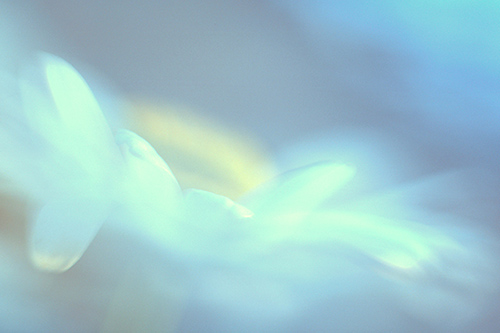
© Larry Monczka
The leaves, grasses and any blossoms in front of the focused point become diffused and muted into watercolour-like swatches of pastel hue. Don’t let chaos reign though. The key to success is to decide exactly where you want that single point of sharpness to be. Design nuances, such as colour harmony, tonal contrast and balanced shapes and lines are vital to an eye-pleasing result.
Personal Vision
In his book "Galen Rowell’s Vision", the author notes that we increasingly inhabit a world of "mature" imagery. He is referring to subjects that have become so much a part of the everyday media parade as to be cliches. In a visual universe where the unfamiliar of yesterday is the humdrum of today, try making abstract photos of nature that go beyond the record shot to suggest a personal vision, convey emotion, and revel in the challenge of expressive seeing.
In a visual universe where the unfamiliar of yesterday is the humdrum of today, try making abstract photos of nature that go beyond the record shot to suggest a personal vision, convey emotion, and revel in the challenge of expressive seeing.
Routine travel to far off corners has allowed everyone access to the once rare. Digital technology all but ensures that exposure and sharpness are a given. So where does all this leave nature photography? Abstraction can embrace any number of approaches in the continuum between the extremes of traditional formal nature portraiture and personal artistic expression. Exploring the natural world on the more personal level that abstraction allows can point the way towards a bolder, more individual approach to nature photography.
About Larry Monczka
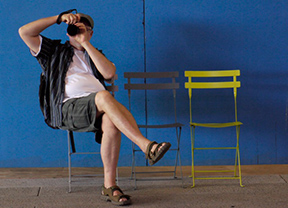
"In 1979 I happened to visit The Metropolitan Museum in New York City. ‘Intimate Landscapes,’ an exhibition of colour photographs by Eliot Porter was on display. I was thrilled by the beauty of his images of the natural world. That was it for me. Photography has been my creative outlet and avocation ever since.
Porter refers to the ‘magic of restlessness’ in the natural world. Acknowledging this, yet seeking visual order within the randomness, continues to give me great personal aesthetic pleasure."
Larry Monczka is a freelance photographer and writer. His articles have been published in PhotoLife, Outdoor Photographer, Nature Photographer and Shutterbug magazines. Make sure to visit his website:
Next, you may want to read more articles by Larry Monczka to help you in learning digital photography.